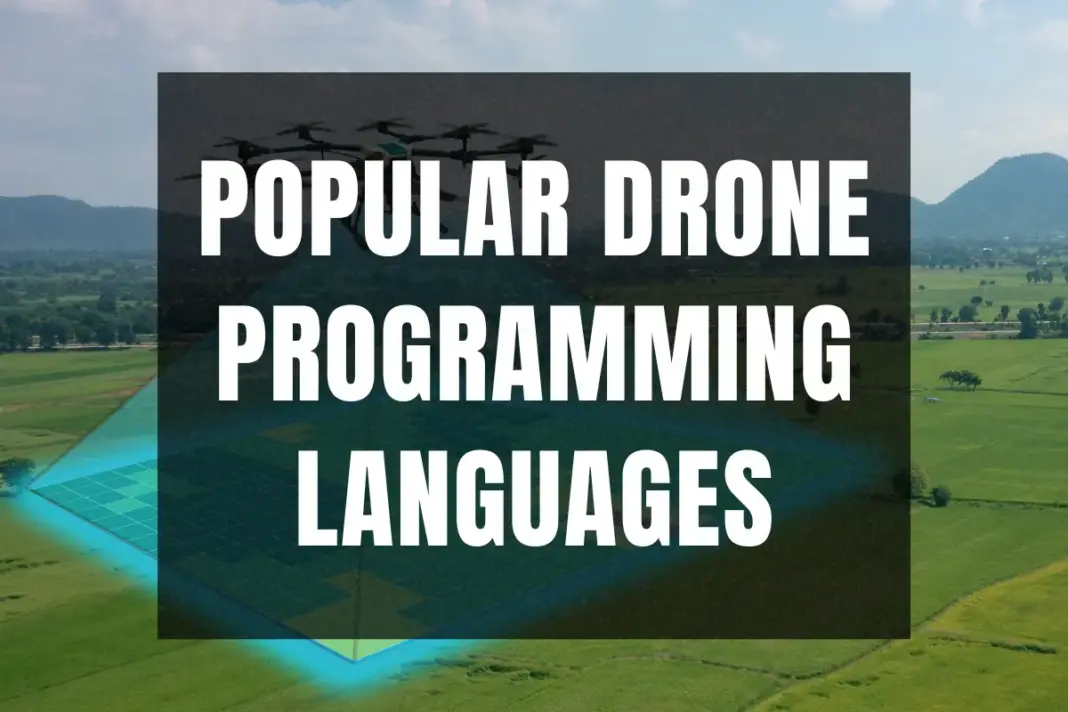Drones, those high-flying marvels that have reshaped photography, videography, agriculture, and countless other fields, are no longer just products of hardware engineering. As the industry advances, the software behind drones becomes equally vital. This push into the software side raises the question: which programming languages are popular when programming drones? Let’s explore the most common languages used in the drone industry.
1. Python
Why It’s Popular: with its easy-to-read syntax and widespread community support, Python has rapidly become one of the go-to languages for drone programming. The DroneKit-Python library, for example, allows developers to create apps that communicate directly with drones, making operations like autonomous flight and image processing more accessible than ever.
2. C++
Why It’s Popular: Regarding real-time system operations, C++ is a preferred choice for many. ArduPilot, a widely used open-source platform for drone software, utilizes C++ to deliver robustness and flexibility. Since drones require precision and quick response times, the efficiency of C++ ensures drones function correctly and safely.
3. JavaScript
Why It’s Popular: JavaScript, primarily known for its web application capabilities, has extended its reach into the drone programming world. With Node.js, developers can utilize the node-ar-drone library to control Parrot AR Drone quadcopters, making it possible to fly drones using just a few lines of JavaScript.
4. MATLAB
Why It’s Popular: While MATLAB might not be the first name that pops your mind when you think of drone programming, it’s instrumental in algorithm development. For instance, drones that use image or data processing in agriculture or mapping can significantly benefit from MATLAB’s robust environment.
5. Ruby
Why It’s Popular: Ruby, another dynamic language like Python, finds its niche in drone programming thanks to its simplicity and elegance. The Argus library in Ruby allows developers to interact with drones seamlessly, especially when prototyping new features.
6. Swift and Objective C
Why They’re Popular: If you’re developing an app for iOS that needs to interact with a drone, chances are you’re using Swift or Objective C. These languages provide the backbone for iOS drone applications, allowing seamless integration between the drone and Apple devices.
Understanding Drone Frameworks and SDKs
It’s essential to understand that while these languages lay the foundation, many drone developers rely on frameworks and Software Development Kits (SDKs) tailored for drones. For instance:
ArduPilot: As mentioned, this open-source platform built on C++ is vital for drone autopilots. It supports multi-copters, planes, rovers, and even boats.
PX4: It’s another open-source flight control software for drones. It’s modular, catering to both beginners and seasoned professionals.
Dronecode: An ecosystem of both platforms, offering a rich platform for drone app development.
Why the Diversity in Languages?
The reason there’s no one-size-fits-all programming language for drones lies in the diverse applications of drones. A drone used for simple videography tasks might require different software than one used for precision agriculture or industrial inspection. Therefore, the best language often depends on the specific application.
Future of Drone Programming
The drone industry is continuously evolving. As AI and machine learning become more integrated into drone operations, we can expect languages like Python, known for their data science capabilities, to take an even more prominent role.
Moreover, as drones become more autonomous and connected, there’s potential for new languages and frameworks to emerge, tailoring specifically to these advanced capabilities.
Conclusion
Once a simple remote-controlled hobby, drones have become sophisticated tools capable of advanced autonomous operations. The programming languages behind them, from Python to C++ and beyond, empower these capabilities. Whether you’re a developer looking to step into the drone world or a drone enthusiast curious about the tech behind your device, understanding these languages and their applications offers a deeper appreciation of the drone revolution. The code that drives them will only become more critical as the skies become crowded with these marvelous machines.

